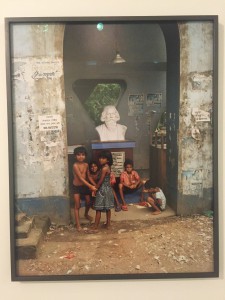Professor Michals
Digital Photography
November 05, 2015
Exhibit Review
I went to see Patrick Faigenbaum: Kolkata/Calcutta Aperture Gallery. It was an interesting gallery located on the 4th floor of 547 W 27st NYC. The gallery was a decent sized place with pictures all over the walls and it had its own book store. The building was kinda old because you would hear the floors creek and see the windows were very old fashion and not modern. The walls were painted painted white and the lights were din. Most photos where huge and there was a lot of walk space. There was about thirty photographs and the entrance was free so there is no need to pay to view the gallery
When I was walking around the gallery, I saw that most of the images had to do with people who lived in a poverty life style. Most of the photographs showed the obstacles the people faced and how they were still happy with how they were. Most people were skin colored and each image had like a narrative behind the photograph. We don’t see modern technology in the photos and we don’t see people fully dressed which shows how people are facing troubles. Although they lived in poverty, they were still smiling and they were accustomed to their life style.
One of the photographs that caught my attention the most was “In front of a bust of Rabindranath Tagore (1861-1941). The picture was taken in Kestopur, Northwest Kolkata in July 2014. The photo is an eye level level shot and is also a medium shot where the photograph is taken a little distanced. The photograph uses frame with in a frame where you can see the trees in the back frame and the entrance also creates a frame for the children sitting down. The photograph also uses the rule of thirds. The photograph caught my attention because although the kids live in a poverty life style, they have a smile on their face. The photograph has like a narrative behind it.
I found the exhibit very interesting because of the narrative behind the photographs and the impact it has on you. The photograph communicates that although they live in poverty, they are still happy with their lives with the smile they have on their faces. You can see that they go through daily struggles but they manage to overcome them and find peace within their lives. You can’t always judge a book by its cover also because you don’t know what the people are going through.





You mention a few times in your review that the people in the photographs tend to be smiling even though they are living in poverty. I think this is one of the strongest things about the show. Faigenbaum used the artist as a way into the lives of ordinary people. And while the people we see are poor at least by our standards, they are not abject. They have a community and a purpose. The photo you picked is an interesting one. We look at the photo and between the kids’ clothing and their surroundings, we know that they are living in poverty. But the kids themselves at the time the photo was taken are probably just having fun with each other.